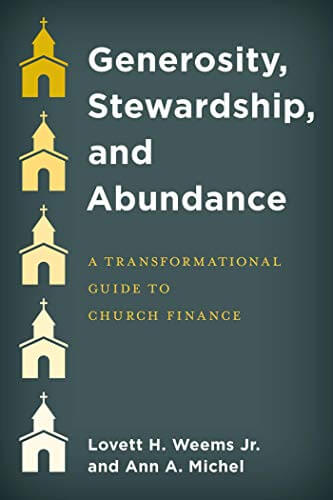The oft-repeated claim that churchgoers are the most generous of Americans was always a reassurance to me as I labored in the vineyard of stewardship ministry — and a source of pride, as well. Unfortunately, however, it turns out this claim is not entirely true. There are other religious givers who are far more charitable than Christians. And even though Christians are more generous than non-religious Americans, that is not much to brag about. The vast majority of Christians are not giving up to their potential or in proportion to what their faith teaches.
Many church members are confused about how to apply the teaching of their faith to their personal resources. Their intentions are often good, but they are not given clear expectations or a consistent conceptual framework for structuring their giving.
Passing the Plate (Oxford University Press, 2008), by sociologists Christian Smith and Michael Emerson and researcher Patricia Snell, reveals some unfortunate truths about the giving patterns of American Christians. Twenty percent give nothing to church or other charities. The vast majority give very little. Congregations manage to stay afloat only because of the generosity of a very small percentage who account for about sixty percent of total giving — and because churches spend the lion’s share of what is given on their internal needs. Moreover, more affluent church members generally give a lesser percentage of income than those of more modest means. The book attempts to provide a sociological explanation for why American Christians are so stingy, despite massive gains in real per capita income over the past century.
Reality and perception
The authors of Passing the Plate conclude that this poor giving cannot be attributed to a lack of adequate financial resources. People who collectively spend not just billions but trillions of dollars on discretionary items and luxury goods (such as travel, entertainment, jewelry, restaurant meals, and so forth) each year cannot objectively claim that they do not have enough money to give. But, the authors conclude, “their subjective perceptions of financial constraint appear to be an important factor limiting their giving money more liberally.” Captive to status consciousness and the consumer-driven culture, even upper middle class Americans tend to think they are just getting by when they are, in fact, quite affluent by any objective standard. Most Christians have the financial capacity to give much more, but only by adjusting their financial priorities and perceptions.
A conspiracy of silence
Another factor stifling generosity is the conspiracy of silence around money and giving in the church and society in general. In American culture, matters of personal and family finances are highly privatized. Few people feel comfortable discussing their income or financial situation with colleagues, friends, family members, sometimes even their own spouses — much less at church or with their pastor. Pastors, too, tend to be quite uncomfortable dealing with issues of money and giving. Many are so anxious about appearing to talk about money too much that they avoid it altogether.
As a consequence, many church members are confused about how to apply the teaching of their faith to their personal resources. Their intentions are often good, but they are not given clear expectations or a consistent conceptual framework for structuring their giving. The result is haphazard and occasional giving that fails to live up to normative teachings on stewardship. What might help American Christians give more? Some important preconditions, say these authors, are communicating expectations about religious giving more clearly, teaching the theology of giving more confidently, building trust through improved financial systems and more effective communications, and providing a variety of well-structured and regular means of giving. The book’s final chapter offers guidance on some of the specific ways churches might increase the giving of their members.
“Pay the bills” or “live the vision”
Congregational culture is also a determinate of giving. The book contrasts two types of churches: “pay the bills” churches that are preoccupied with institutional needs and view money and giving through the lens of obligation, and “live the vision” churches that regard financial giving as an important aspect of the Christian life. The latter concentrate on nurturing faith, building relationships, and serving mission. For them, learning to deal with money is part of spiritual growth. Although cultural transformation is neither quick nor easy, moving toward a “live the vision” mentality encourages faithful giving.
No small matter
Smith, Emerson, and Snell preface their work with the bold claim that “if American Christians were to give from their income generously — not lavishly, mind you, only generously — they could transform the world, starting right away.… They could generate, over and above what they currently give, a total of another $133.4 billion a year.” The potential good that could be achieved through such giving is “staggering,” they say. This most provocative claim is also the most hopeful — not just a rallying cry but a Kingdom mandate for us to give up to our potential.
![]() Download a one-page To the Point of this article to share with others.
Download a one-page To the Point of this article to share with others.







